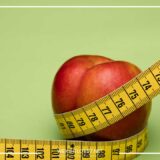Natural Remedies for Hayfever

Natural Remedies for Hayfever
Natural Remedies for Hayfever: A Comprehensive Guide to Managing Seasonal Allergies
Hayfever, also known as allergic rhinitis, is one of the most common allergic conditions worldwide. It affects millions of people, especially during peak allergy seasons when pollen counts rise.
For those who suffer from this condition, symptoms such as sneezing, nasal congestion, itchy or watery eyes, and a runny nose can make daily life uncomfortable and difficult.
Many people seek relief from over-the-counter medications like antihistamines and nasal sprays. However, a growing number of individuals are looking for natural remedies as a way to complement or even replace conventional treatments.
Natural remedies for hayfever focus on reducing inflammation, strengthening the immune system, and improving overall well-being.
The good news is that numerous natural solutions exist to address the underlying causes of hayfever. By incorporating the right diet, lifestyle adjustments, herbal remedies, and other holistic strategies, you can reduce your reliance on conventional medications and find relief from seasonal allergies.
This comprehensive guide explores some of the most popular and effective natural remedies for hayfever, as well as important considerations to ensure safe and lasting relief.
Understanding Hayfever: What It Is and What Causes It
Hayfever occurs when the body’s immune system overreacts to airborne allergens, typically pollen from trees, grasses, and weeds.
Other allergens that can trigger hayfever include pet dander, mold spores, dust mites, and even certain foods.
When these allergens are inhaled, the immune system mistakenly identifies them as harmful invaders and releases histamines to combat them. This results in symptoms like sneezing, itching, congestion, and watery eyes.
There are two primary types of hayfever:
- Seasonal Allergic Rhinitis: This type of hayfever is triggered by seasonal allergens, especially pollen. It tends to worsen in the spring and fall when pollen counts are highest.
- Perennial Allergic Rhinitis: This type occurs year-round and is typically triggered by indoor allergens like dust mites, pet dander, or mold. It can be particularly bothersome in people who are sensitive to these allergens at all times of the year.
While conventional treatments such as antihistamines, decongestants, and nasal corticosteroids are often effective in managing symptoms, natural remedies can provide a safer, gentler approach with fewer side effects.
These natural solutions focus on treating the root cause of hayfever—an overactive immune system—while promoting overall health.
Herbal Remedies for Hayfever: Nature’s Medicine Cabinet
Herbal medicine has been used for centuries to manage allergies and inflammation. Many herbs contain compounds that can help modulate the immune response, reduce inflammation, and provide relief from hayfever symptoms. Here are some of the most effective herbal remedies for managing hayfever:
1. Stinging Nettle (Urtica dioica)
Stinging nettle is a powerful anti-inflammatory herb that has long been used to treat a variety of conditions, including allergies.
It contains natural compounds that help inhibit the release of histamine, the chemical responsible for many allergy symptoms.
By reducing histamine production, stinging nettle may help alleviate symptoms such as sneezing, congestion, and itchy eyes.
Stinging nettle can be taken in several forms, including:
- Capsules: Available as supplements, these provide a convenient way to incorporate stinging nettle into your routine.
- Tinctures: A concentrated liquid form that can be taken directly or diluted in water.
- Teas: Drinking nettle tea is another easy way to benefit from its anti-inflammatory properties.
2. Butterbur (Petasites hybridus)
Butterbur is an herb that has shown great promise in the treatment of hayfever. Research has indicated that butterbur can help reduce inflammation and relax the airways, making it an effective alternative to antihistamines.
Studies have found that butterbur is just as effective as traditional medications for alleviating hayfever symptoms, but without the drowsiness or side effects commonly associated with antihistamines.
Butterbur is typically taken in capsule or tablet form, but it is important to ensure that the product is free from harmful compounds, such as pyrrolizidine alkaloids (PAs), which can cause liver damage. Look for butterbur products that are standardized to be PA-free.
3. Licorice Root (Glycyrrhiza glabra)
Licorice root is another herb with potent anti-inflammatory and immune-boosting properties. It contains glycyrrhizin, a compound that can help regulate the immune system’s response to allergens.
Licorice root has been used in traditional medicine to soothe irritated airways and reduce inflammation in the nasal passages.
It is believed to help prevent the overproduction of histamine and other inflammatory chemicals that cause allergy symptoms.
Licorice root can be taken in various forms, including capsules, tablets, tinctures, or teas. However, it should be used with caution, particularly in people with high blood pressure, as prolonged use of licorice can elevate blood pressure in some individuals.
4. Quercetin
Quercetin is a natural flavonoid found in many fruits and vegetables, including apples, onions, and berries. This powerful antioxidant has antihistamine and anti-inflammatory effects, making it an excellent remedy for hayfever.
Quercetin helps stabilize mast cells, which are responsible for releasing histamine during an allergic reaction.
By preventing the release of histamine, quercetin can reduce symptoms such as sneezing, runny nose, and itchy eyes.
Quercetin supplements are widely available, but you can also get this flavonoid from foods such as apples, onions, citrus fruits, grapes, and tea.
Dietary Changes for Hayfever Relief
Your diet plays a significant role in managing hayfever symptoms. Certain foods have the power to reduce inflammation in the body and support a healthy immune system.
Conversely, some foods may worsen inflammation or trigger allergic reactions. Here are some dietary changes that can help reduce hayfever symptoms:
1. Elimination Diet
An elimination diet involves removing common allergens from your diet to identify which foods may be contributing to your hayfever symptoms.
Foods like dairy, gluten, eggs, soy, nuts, and shellfish are common culprits that can trigger inflammation and worsen allergic reactions.
By eliminating these foods for a few weeks and gradually reintroducing them, you can pinpoint which foods may be aggravating your hayfever.
It’s important to work with a healthcare provider or nutritionist when starting an elimination diet to ensure you’re getting the necessary nutrients and to properly identify any food sensitivities.
2. Anti-inflammatory Foods
Incorporating anti-inflammatory foods into your diet can help reduce inflammation throughout the body, including in the nasal passages. These foods include:
- Fruits and Vegetables: Berries, citrus fruits, leafy greens, spinach, and broccoli are rich in antioxidants that help combat inflammation.
- Omega-3 Fatty Acids: Fatty fish like salmon, mackerel, and sardines are rich in omega-3s, which have been shown to reduce inflammation and support immune function.
- Whole Grains: Brown rice, quinoa, and oats provide fiber and other nutrients that can help regulate inflammation.
- Nuts and Seeds: Walnuts, chia seeds, and flaxseeds are high in healthy fats and antioxidants that support overall health.
3. Probiotics
Probiotics are beneficial bacteria that support gut health and immune function. The gut plays a crucial role in immune system regulation, and a balanced gut microbiome can help prevent overactive immune responses to allergens.
Probiotics can be found in fermented foods such as yogurt, kefir, sauerkraut, kimchi, and miso. Probiotic supplements are also widely available.
Research suggests that a healthy gut microbiome can reduce the severity of allergic reactions, making probiotics a valuable addition to any hayfever management plan.
Lifestyle Changes to Minimize Hayfever Symptoms
In addition to dietary changes, certain lifestyle modifications can help reduce your exposure to allergens and alleviate hayfever symptoms.
1. Avoid Allergens
The most effective way to prevent hayfever symptoms is to minimize exposure to allergens. Some strategies for reducing allergen exposure include:
- Stay Indoors During High Pollen Seasons: Pollen counts are typically highest in the early morning and evening, so try to stay indoors during these times.
- Wear a Pollen Mask: If you must go outside, wear a mask that filters out pollen and other allergens.
- Keep Windows Closed: During pollen season, keep windows closed at home and in your car to prevent allergens from entering.
- Clean Regularly: Regularly clean your home to reduce the presence of dust mites, pet dander, and mold. Use a vacuum cleaner with a HEPA filter to capture small particles.
2. Nasal Irrigation
Nasal irrigation is a simple and effective way to clear allergens from the nasal passages. Using a saline solution to rinse the nose helps remove pollen, dust, and other irritants, reducing congestion and irritation.
You can use a neti pot, nasal spray, or a bulb syringe for nasal irrigation.
Regular nasal irrigation can significantly improve sinus health and prevent the buildup of allergens in the nasal passages.
3. Use a Humidifier
Dry air can aggravate hayfever symptoms by irritating the nasal passages. Using a humidifier in your bedroom or living area can add moisture to the air, soothing irritated airways and promoting better breathing. Ensure that your humidifier is cleaned regularly to prevent mold growth.
4. Stress Management
Stress can exacerbate hayfever symptoms by triggering inflammation and weakening the immune system. Incorporating relaxation techniques into your daily routine can help reduce stress levels and improve overall well-being.
Practices such as yoga, meditation, and deep breathing exercises are excellent for calming the mind and promoting relaxation.
Other Natural Remedies for Hayfever Relief
In addition to herbal remedies, dietary changes, and lifestyle modifications, there are a few other natural treatments that may help alleviate hayfever symptoms:
1. Local Honey
Consuming local honey is a popular remedy for hayfever. The idea is that local honey contains trace amounts of pollen from the surrounding area, which can help desensitize your immune system to local allergens. Over time, regular consumption of local honey may reduce the severity of allergic reactions.
2. Vitamin C and Vitamin D
Both Vitamin C and Vitamin D are essential for immune health. Vitamin C is an antioxidant that can reduce inflammation and boost the immune system, while Vitamin D helps regulate immune responses.
You can get Vitamin C from citrus fruits, berries, and bell peppers, and Vitamin D from sunlight exposure, fatty fish, and fortified dairy products.
3. Essential Oils
Certain essential oils have anti-inflammatory and antihistamine properties that can help relieve hayfever symptoms.
Eucalyptus oil, for example, can help clear nasal congestion, while lavender and peppermint oils may reduce inflammation.
Diffusing essential oils in your home or applying them topically (when diluted) may provide relief.
Final Thoughts: Managing Hayfever Naturally
Hayfever can be a frustrating condition, but with the right natural remedies, it’s possible to manage and alleviate symptoms effectively.
By combining herbal remedies, dietary changes, lifestyle adjustments, and other holistic approaches, you can significantly reduce your reliance on conventional medications while improving your overall health.
Remember, natural remedies can take time to show results, so it’s important to be patient and consistent with your approach.
Additionally, always consult a healthcare professional before trying new treatments, especially if you have any pre-existing medical conditions or are taking other medications.
With the right combination of strategies, you can find lasting relief from hayfever and enjoy the changing seasons without the burden of allergies.

















